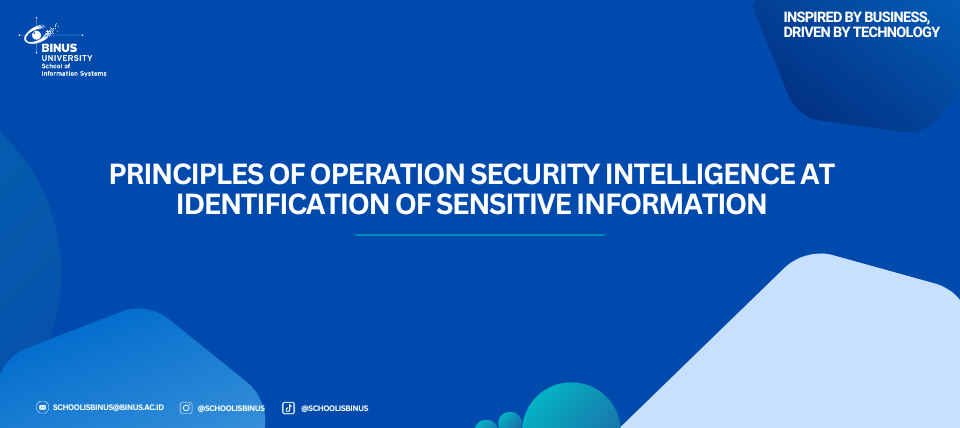Principles of Operation Security Intelligence at Identification of Sensitive Information

o The identification of sensitive information is a critical step in ensuring information security. It involves understanding the nature of sensitive data, its potential impact if compromised, and the appropriate security measures to protect it
o Identifying data, information, or assets that need protection, such as operational secrets, strategies, technologies, or organizational plans.
1. Comprehensive Data Inventory
· Identify and Categorize Data: Classify data by sensitivity level (e.g., low, medium, high) to understand its criticality or not for organisation.
· Track Data Flow: Monitor data’s journey from creation to disposal to identify potential vulnerabilities that depict in a data flow
· Map Data Storage: Determine where sensitive data resides, including physical and digital locations place of data storage
2. Risk Assessment and Prioritization
· Assess Potential Threats: Identify potential risks like cyberattacks, insider threats, and physical breaches.
· Evaluate Impact: Determine the potential consequences of a data breach, such as financial loss or reputational damage.
· Prioritize Security Efforts: Allocate resources and implement security measures based on risk levels.
3. Classification and Labeling
· Clearly Label Sensitive Data: Assign appropriate labels to indicate the sensitivity level and handling requirements.
· Ensure Consistent Labeling: Maintain consistent labeling standards across the organization.
· Regularly Review Labels: Update classification and labeling schemes to reflect changing data sensitivity and regulatory requirements.
4. Access Controls
· Limit Access: Grant access to sensitive information only to authorized individuals with a legitimate need.
· Implement Role-Based Access: Assign permissions based on users’ roles and responsibilities.
· Minimize Access: Grant users the minimum necessary access to perform their duties.
· Verify User Identity: Utilize strong authentication methods like multi-factor authentication.
5. Data Protection and Encryption
· Protect Data at Rest and in Transit: Encrypt sensitive data to prevent unauthorized access.
· Secure Data Storage: Use secure storage solutions like encrypted drives and secure cloud storage.
· Implement Data Backup and Recovery: Establish robust backup and recovery procedures to safeguard against data loss.
6. Monitoring and Logging
· Monitor Network and System Activity: Continuously monitor for potential threats.
· Analyze Logs: Examine logs to identify suspicious activity and potential security incidents.
· Utilize SIEM Tools: Correlate and analyze security events across different systems.
7. Incident Response Planning
· Establish an Incident Response Team: Create a dedicated team to handle security incidents.
· Develop an Incident Response Plan: Outline procedures for detecting, containing, eradicating, recovering from, and learning from security incidents.
· Test the Incident Response Plan: Conduct regular security drills and simulations.

